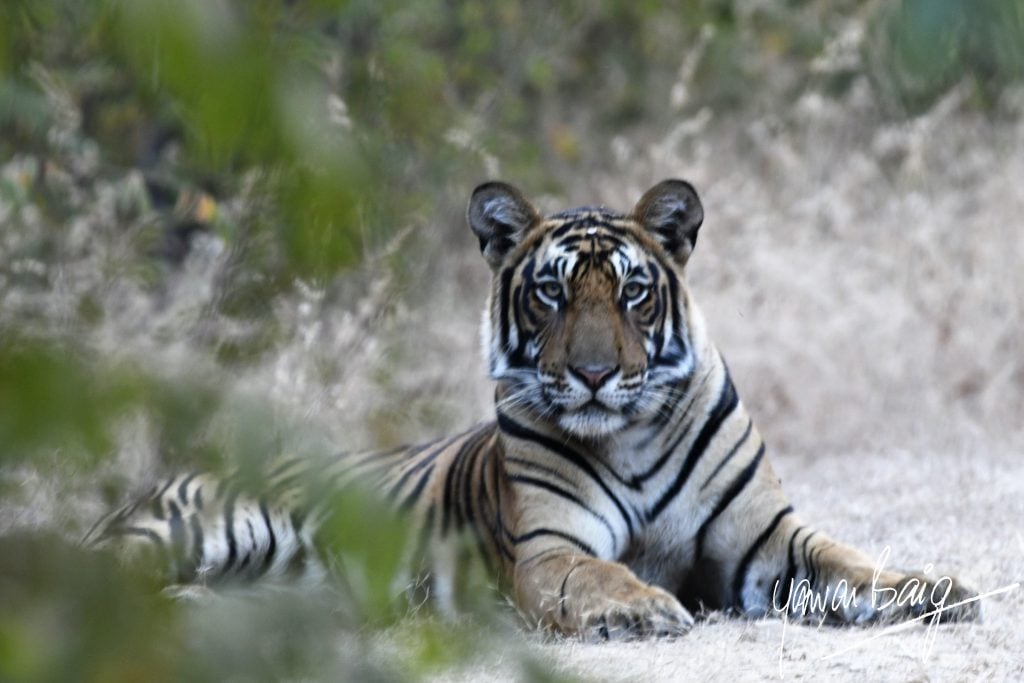
Let me introduce you to the tiger. He is not an object. He is not a spectacle. He does not exist for your pleasure or like all politicians, for photo ops. He is not living in your land; you are encroaching on his. The tiger (gender neutral term as it refers to the species, and not to the male alone) is a meter. It is a meter that tells the tale of the health of the forest. Which translates to the health of the earth. Yes, the same earth which we call ‘Mother’. The same earth of which there is only one and none other. The same earth on which we live, believe it or not, along with other species which are, again believe it or not, equally critical to the health and survival of the earth. Sorry. I apologize. Not equally critical but simply critical. And that is because they are, all of them, included in the list of those that are not destructive or toxic to the earth. If I made a comparative list of species comparing those that are consciously toxic to the health of the earth and those that are not, it would be a very simple matter. On one side – NOT TOXIC – I could list every living being of every imaginable kind. And on the other side, in solitary splendid disgrace, I would write – MANKIND. It looks like while introducing the tiger, I also introduced myself. Any resemblance to you is purely coincidental.

The tiger is a meter because it sits on top of the pyramid that constitutes the forest. At the bottom is the leaf mulch, molds and decomposing matter which produces the life-giving nitrogen that powers all plant and tree growth. Trees produce oxygen. I wish they produced Wi-Fi also so that they wouldn’t be cut down so fast. Trees provide cover to the earth and those who live on it. They prevent soil washing off in torrential rain. They prevent landslides. Trees are the home of insects, reptiles and birds. Trees are the foundation of their lives. They live on trees, eat off them, protect them, and are protected and given refuge by trees. And when they die, they provide the manure that trees live off. Trees also regulate temperature and rain.
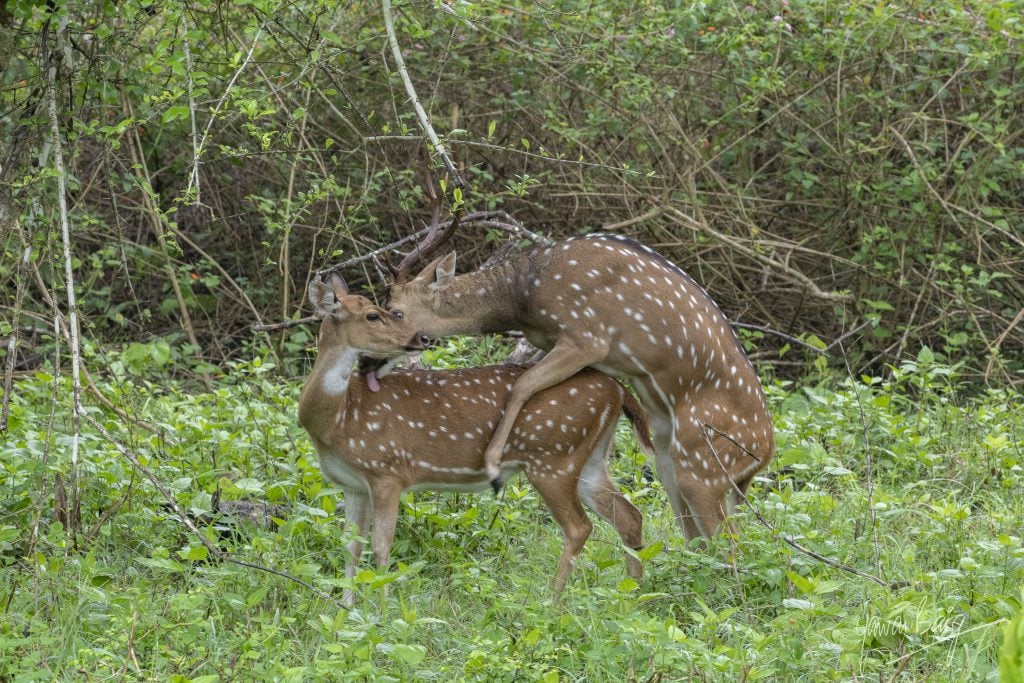
In a healthy forest, there are healthy trees, which provide ground cover for herbivores, browsers and grazers, whose dung and eventually their bodies support tree growth. Herbivores breed profusely and frequently so their populations can decimate their own food supply. Some have large litters, others breed at least once a year, sometimes twice. Their young mature in months, not years. Herbivore population is therefore regulated by carnivores, leopards, wolves, hyenas and others with the apex predator, the tiger at the peak of the pyramid. They kill and eat the old, sick, and weak and so ensure the overall health and breeding vigor of herbivores.
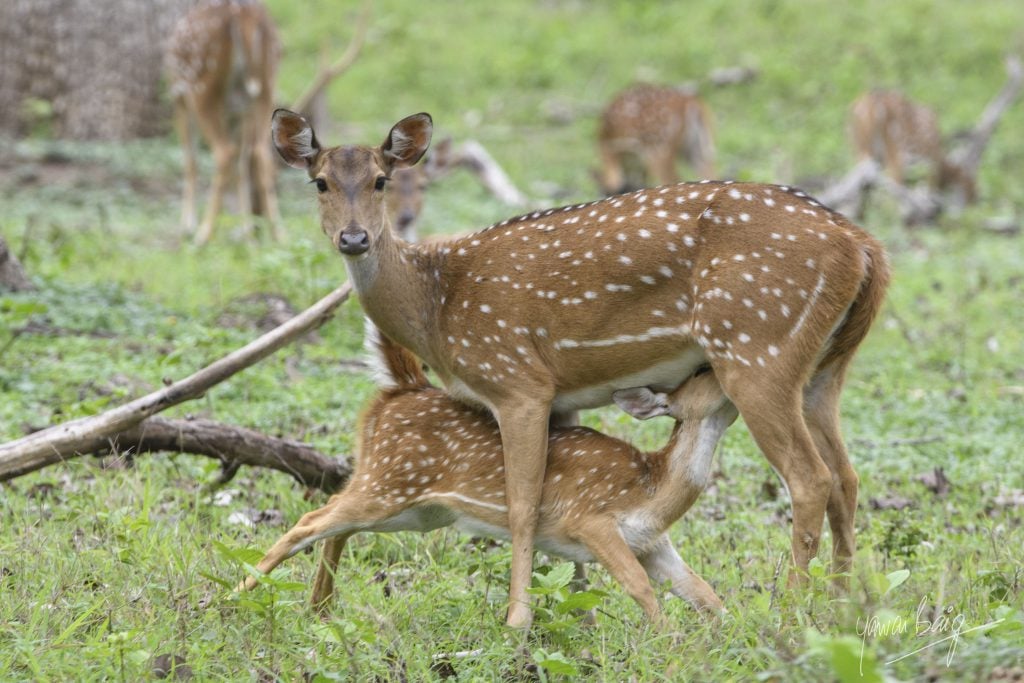
Carnivore population is self-regulated by longer gestation periods, one or two cubs which are mother dependent for up to two years and so the mother cannot breed until her cubs are weaned. Cubs learn to hunt from their mothers and if the mother dies while they are still too young and have not learnt to hunt, they will perish. Most carnivore mothers, especially the cats, leopards and tigers, have trouble rearing more than two cubs, sometimes even more than one. The others, even if they are born, perish. When carnivore populations grow, it indicates that herbivore populations are proliferating, which means that there is enough for them to eat which in turn indicates a healthy forest. It is a beautiful cycle. When carnivore population are artificially reduced by trapping and poaching and when herbivore populations are threatened by competition for grazing land from village cattle and the threat of disease that they bring into the forest, it means a threat to this whole cycle which in turn can mean a threat to the environment, which in its final stage, leads to death of forests, creation of deserts, reduction of rainfall, drying up of rivers and the death of humans. I hate to use self-interest as the argument in favor of protecting the environment but in a society where selfishness has been granted primary virtue status, what else can I do?
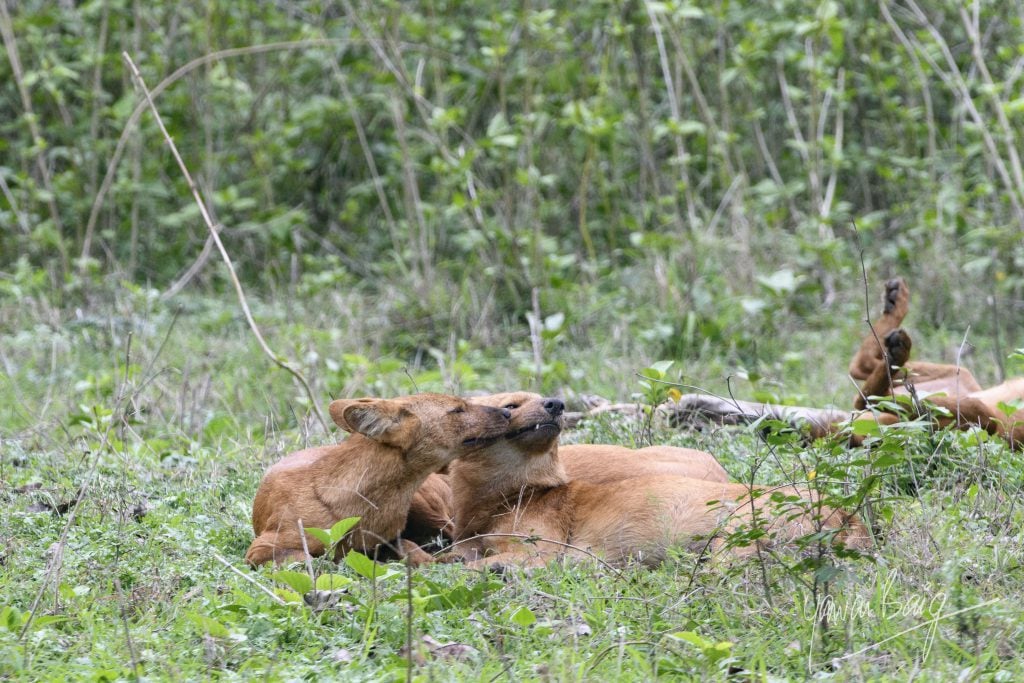
The tiger therefore is not an object of interest or a curiosity, but the single, most powerful indicator of our own future. I understand that our government in its own wisdom has decided to build a zoo in Corbett National Park, our primary tiger reserve for the convenience of those who lack patience and don’t care about the environment or forests or about anyone or anything that lives in them but still want to see a tiger. Typically, this means that the tiger, for no fault of his own, will be sentenced not just to life imprisonment, but to endless torture while it lives, so that the idle curiosity of gawkers can be satisfied. Is this something that you would like to support?
Why do I call it life imprisonment and endless torture? See for yourself. Once a tiger is caught and put into a cage (being stuck on a tiny man-made island surrounded by a water filled moat is still a cage), it can never return to the wild. It would have lost all its fear of humans and developed an abiding hatred for them and so would be too dangerous to release in any forest. The fact that it was not dangerous to begin with and became dangerous because of what we did to it, is neither here nor there. Endless torture because the tiger is a free roaming animal with a range of up to thirty square miles. It is territorial and does not like others encroaching on its territory. It is a solitary creature which likes to be left alone. It does not bother you if you don’t bother it. I am living proof of this. Since I was fifteen, I have slept more times than I can recall, in dry stream beds and under massive trees in cool shade in prime tiger country and I am here, writing this article in defence of my friends (tigers) who decided not to eat junk food (me). On at least one occasion, I walked past a cave, half-way up a small rocky hillock in the Sahyadri Hills in Kadam forest (now the Kaval Tiger Reserve), in which a tigress had her infant cubs. She merely sat at the mouth of the cave and watched, as Shivaiyya, my Gond partner and I, walked past. I say, ‘on at least one occasion’, because that is the one, I know about. Who knows how many other times I would have walked past a tiger or a tiger walked past me when I was asleep and left me alone?
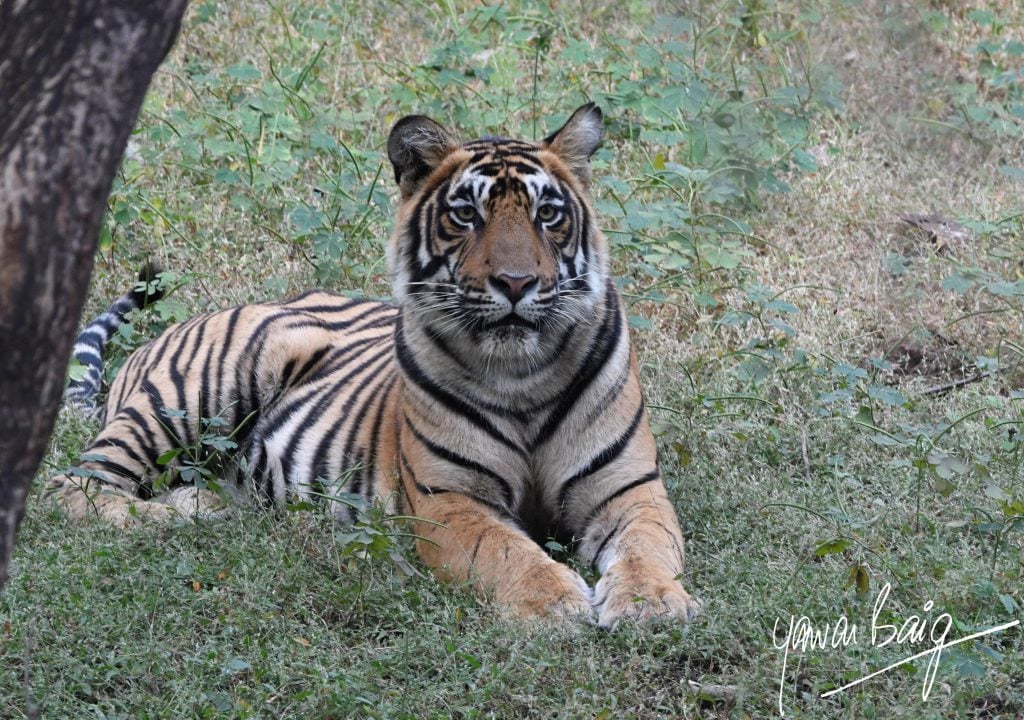
Imagine this creature, used to square miles, confined in square feet, and then harassed day and night by screaming, bleating and laughing humans, calling out to it while taking selfies. I sincerely hope that you can see how torturous it would be. To top it all, the poor tiger committed no crime to deserve this. Its crime is that it exists. Add to this, that the tiger, so confined is out of both the gene pool in the forest and unable to impact the life cycle that needs it, all because you wish to satisfy idle curiosity and you have added insult to injury, causing damage not just to one animal but to the future of the forest itself and all those that live in it.
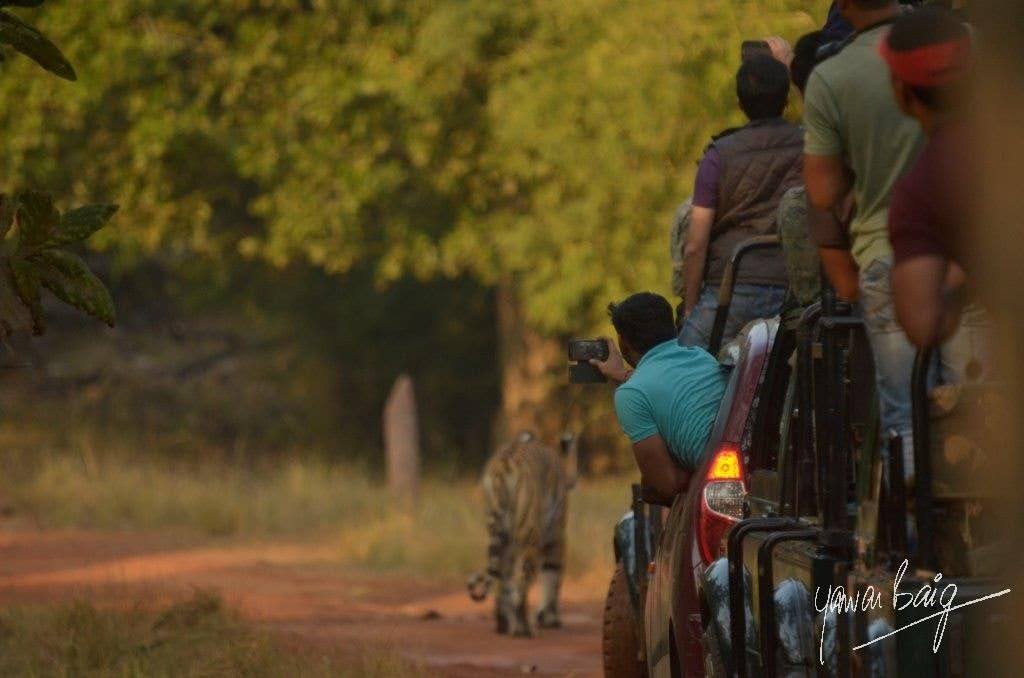
What is the solution?
Educate people. Start with school children. Tell them the story of the tiger. Teach them woodcraft so that they can go into forests with knowledge, concern and commitment to life and enjoy the whole forest, not only search for tigers. I believe that the future of our planet lies in educating our youngsters so that they can appreciate nature without the need to change it and recast it in their own image. They must be taught to respect plants, animals, birds, and insects, not only those which are ‘beautiful’ by our standards, but which are incredibly beautiful in their form and function as a sign of their Creator.
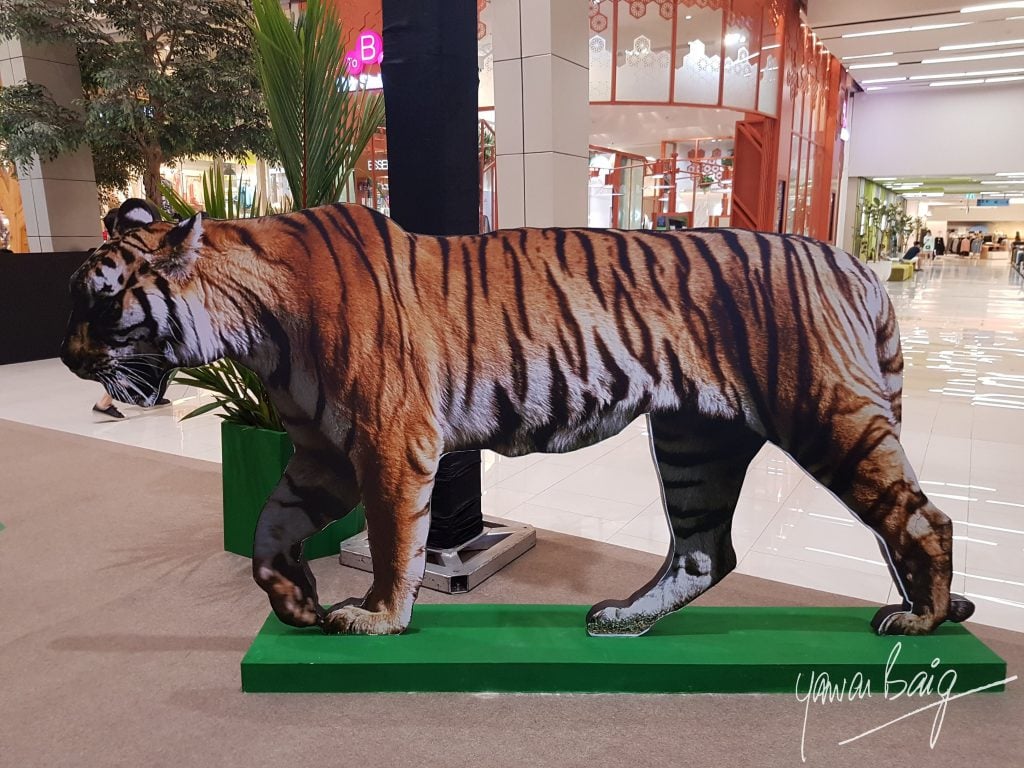
If you can’t or won’t do this, then please print out this picture, enlarge it and erect cutouts of this in all villages and cities of India, so that gawkers can gawk at the tiger from the comfort of their beds. Leave real, live tigers alone to live in peace and do what they were created to do; protect the earth and sustain life. Not torture and destroy it.
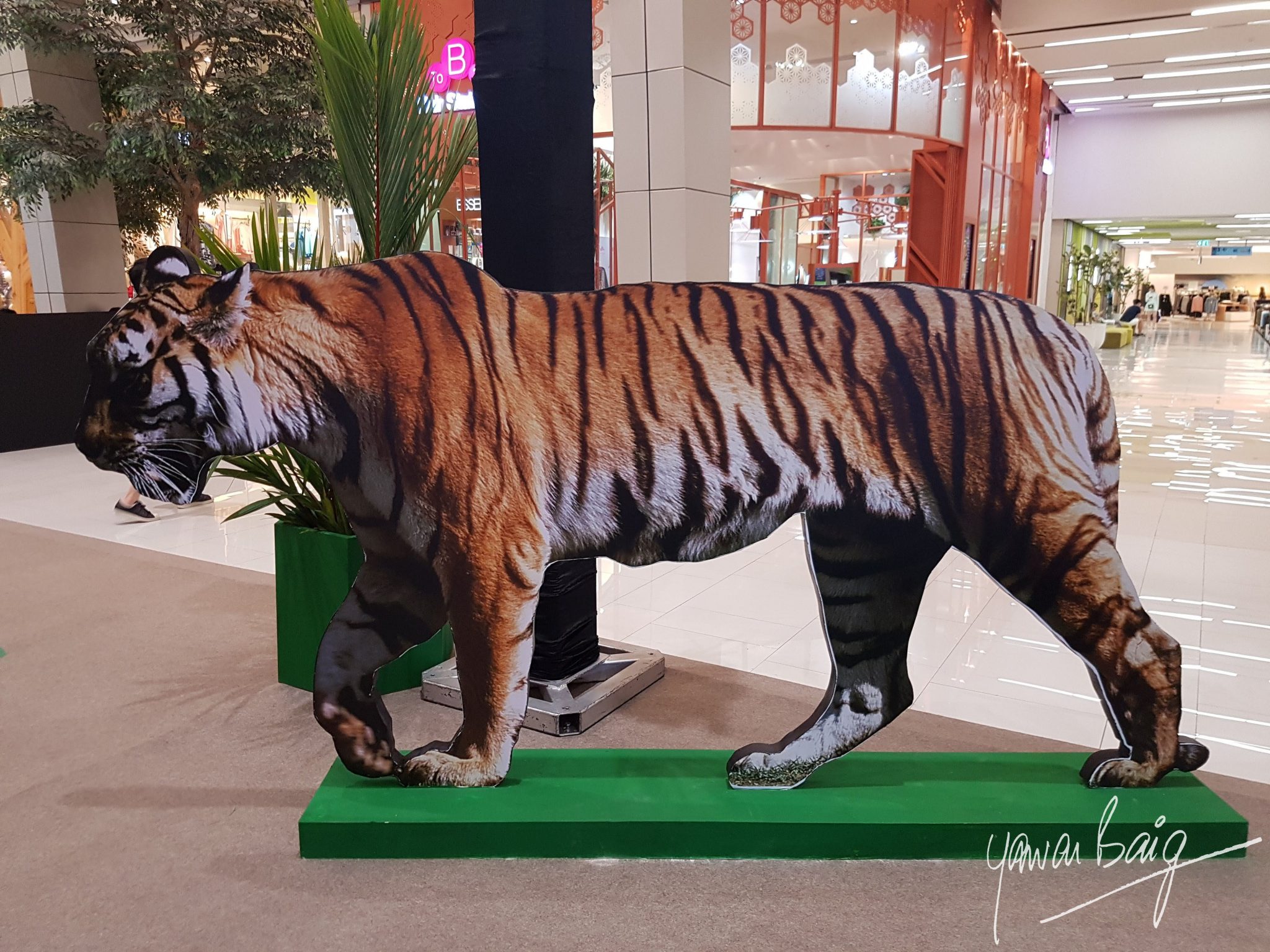
Tiger Appreciates The Tiger
Learnt something new. Never thought of the environment cycle in that sense. Thank you writing and sharing. Please take me on a trip with you to the forest.
Tigers and humans have shared the Earth for thousands of years. The former, fierce and majestic cats, while the latter, curious and cunning.
To install a zoo in the Tiger Reserve is unnecessary and cruel, as you say, Mr Baig!
Zoos do have a purpose, for example the breeding of animals in danger of becoming extinct, such as gorillas. These were definitely bred for this purpose in two local safari parks near us. (We live in the UK.)They are then taken to Africa and carefully introduced to their natural habitats over a period of time.
However, building a zoo in the Corbett Tiger Reserve is like taking coals to Newcastle! (Newcastle used to be a big coal mining area in north England.)